Related Research Articles

Torquato Tasso was an Italian poet of the 16th century, known for his 1591 poem Gerusalemme liberata, in which he depicts a highly imaginative version of the combats between Christians and Muslims at the end of the First Crusade, during the Siege of Jerusalem of 1099.

Carl August Nielsen was a Danish composer, conductor and violinist, widely recognized as his country's most prominent composer.
Giaches de Wert was a Franco-Flemish composer of the late Renaissance, active in Italy. Intimately connected with the progressive musical center of Ferrara, he was one of the leaders in developing the style of the late Renaissance madrigal. He was one of the most influential of late sixteenth-century madrigal composers, particularly on Claudio Monteverdi, and his later music was formative on the development of music of the early Baroque era.

Niels Wilhelm Gade was a Danish composer, conductor, violinist, organist and teacher. Together with Johan Peter Emilius Hartmann, he was the leading Danish musician of his day, in the period known as the Danish Golden Age.
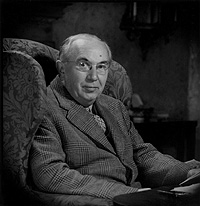
Boris Ord, was a British organist and choirmaster of King's College, Cambridge (1929-1957). During World War II he served in the Royal Air Force. He is best known for his choral setting of Adam lay ybounden, his only published composition.
Symphony No. 4, Op. 29, FS 76, also known as "The Inextinguishable", was completed by Danish composer Carl Nielsen in 1916. Composed against the backdrop of World War I, this symphony is among the most dramatic that Nielsen wrote, featuring a "battle" between two sets of timpani.
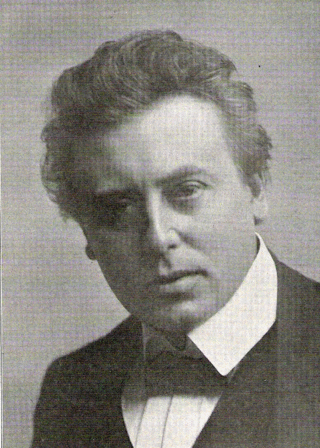
Louis Christian August Glass was a Danish composer.
The year 1609 in music involved some significant events.

Mogens Wöldike was a Danish conductor, choirmaster, organist, and scholar known for his interpretation of music from the Baroque and Classical periods, was born and died in Copenhagen. His son-in-law was the Haydn scholar Jens Peter Larsen. He studied under Carl Nielsen and Thomas Laub and graduated from Copenhagen University in 1920. He was organist at the Marine church in 1924 and the Christiansborg Palace Church from 1931; from 1959 to 1972 he was organist at Copenhagen Cathedral.
Walter, Knight Boeykens was a Belgian conductor and a world-renowned clarinetist. Boeykens' impressive discography, including several critically acclaimed performances, are testimony to his status as one of the most notable clarinetists of the 20th century. Boeykens remained active and was in concert frequently all around the world until his death in 2013.
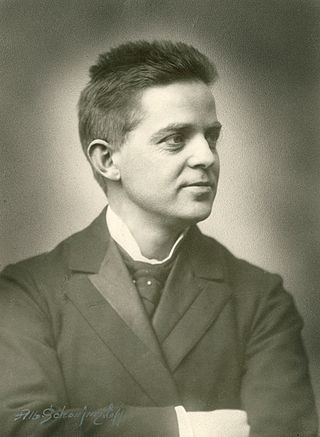
Carl Nielsen's Helios Overture, Opus 17, is a concert overture which was first performed by the Royal Danish Orchestra, conducted by Johan Svendsen, on 8 October 1903 in the large hall of the Odd Fellows Mansion in Copenhagen.
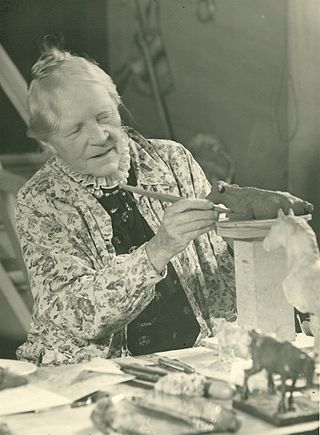
Anne Marie Carl-Nielsen was a Danish sculptor. Her preferred themes were domestic animals and people, with an intense, naturalistic portrayal of movements and sentiments. She also depicted themes from Nordic mythology. She was "one of the first women to be taken seriously as a sculptor," a trend-setter in Danish art for most of her life. She was married to the Danish composer Carl Nielsen.
Carl Nielsen's Chaconne, Op. 32, is among the composer's most frequently played compositions for piano.
Ars Nova Copenhagen is a Danish vocal ensemble based in Copenhagen. The ensemble specialises in the interpretation of the polyphonic choral music of the Renaissance and new vocal music.

Tre Motetter, FS 139, Op. 55, is a composition for unaccompanied choir by Carl Nielsen. It is a setting of three quotations in Latin from different psalms chosen by the composer and his wife Anne Marie Carl-Nielsen. The three motets, Afflictus sum, Dominus regit me and Benedictus Dominus were first performed on 11 April 1930 at the Ny Carlsberg Glyptotek by Mogens Wöldike and the Palestrina choir, to whom they are dedicated. Among the composer's last works, they were published in 1931 by the Skandinavisk Musikforlag in Copenhagen.
Torben Schousboe was a Danish music researcher and writer. After completing organ studies in 1960, he graduated from Copenhagen University, where he taught from 1972 to 1996. He is known above all for his work on Carl Nielsen. In 1983 he published, in collaboration with Nielsen's daughter Irmelin Eggert Møller, the composer's diaries and correspondence with his wife Anne Marie Carl-Nielsen.
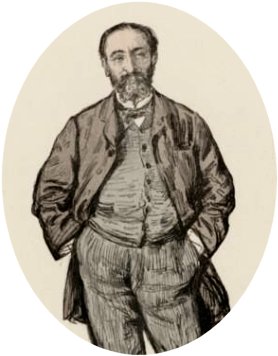
The Requiem, full title Messe de Requiem, Op. 54, is a Requiem Mass composed by Camille Saint-Saëns in 1878 for soloists, choir and orchestra. He composed it in memory of his friend and patron, Albert Libon, and conducted the first performance on 22 May 1878 at Saint-Sulpice, Paris, with Charles-Marie Widor as the organist. It was first published the same year.
Emilie Marie Dagmar Borup was a Danish pianist and music educator. She is remembered in particular for introducing ear training into the curriculum of the Royal Danish Academy of Music and related institutions. She adapted and expanded the approach she had learnt in Rome, Berlin and Paris by publishing textbooks and demonstrating it to students in Sweden and the Netherlands. Thanks to Borup, ear training became a key aspect of education offered by her students, including the organist Ebba Nielsen and the pianist Merete Westergaard.
Grethe Krogh was a Danish concert organist and professor. She began playing at age five and was educated at the Royal Danish Academy of Music. Krogh's concert debut playing the piano and organ came in 1953 and she began working as an organist firstly at Nykøbing Mors from 1954 to 1957 and then at Holmen Church from 1964 to 1969. She was appointed professor of organ playing at the Royal Danish Academy of Music in 1969 and worked there until 1990 when she became a freelance solo organist. Krogh received various awards and scholarships throughout the course of her career. She received the Tagea Brandt Rejselegat in 1972 and was appointed Knight of the Order of the Dannebrog in 1974 before being promoted to Knight First Class in 1982. Krogh was decorated with France's Chevalier of the Ordre des Arts et des Lettres in 2006.
References
- ↑ "Requiemsurvey.org". www.requiemsurvey.org. Retrieved 11 May 2022.
- ↑ "Bernhard Lewkovitch". www.wisemusicclassical.com. Retrieved 11 May 2022.
- ↑ "Bernhard Lewkovitch". afdøde.dk. Retrieved 19 January 2024.